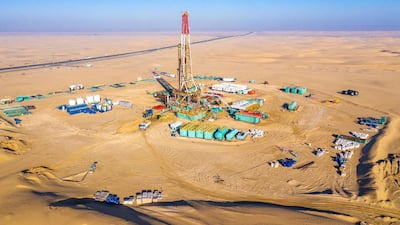The recent discovery of 80 trillion cubic feet of gas reserves in Jebel Ali would be sufficient to end Dubai's reliance on LNG imports by 2025 with the UAE looking at tighter integration of its gas infrastructure, analysts say.
Dubai, which consumes around 1.5 billion standard cubic feet of gas a day, much of which is imported, could have a surplus when production begins on the discovered reserves.
"Eighty tcf is plenty of gas, and the first phase of development of this field can supply enough gas to Dubai and they won't need to import LNG post-2025 because their FSRU [floating storage regasification unit – a vessel used to re-gasify imported LNG] for Jebel Ali LNG terminal is expiring in 2025," says Siamak Adibi, senior consultant at Facts Global Energy based in London.
Dubai Supply Authority, which will jointly undertake development of the Jebel Ali project with Abu Dhabi National Oil Company, operates an FSRU with a send-out capacity of 1 billion bcf a day.
The UAE's announcement of vast discoveries of gas potential moved the country to sixth position globally for reserves last year. Around 58 tcf of conventional and 160 tcf of unconventional gas was discovered in Abu Dhabi. Sharjah also announced it has found deep gas with flow rates of 50 million cubic feet a day last week. By global standards, the recent find in the area between the emirates of Dubai and Abu Dhabi is the largest since the discovery of the world's second-largest gasfield in Turkmenistan in 2005.The Jebel Ali reserve is also considered to have high potential because it is a shallow gas asset, making it easy to extract with low development costs. This will make its development a priority, says Liam Yates, Middle East upstream analyst at Wood Mackenzie.
The gas finds increase "the need for integration of energy infrastructure in the UAE when you have got Sharjah, Dubai and Abu Dhabi making these discoveries", said Nasser Saidi of economic advisory company, Nasser Saidi & Associates.
With possible room for exports from abundant reserves, there is also a greater impetus towards developing onshore liquefaction facilities if the country looks to become a gas exporter, he said.
“It opens the potential to enter into the LNG market which requires onshore LNG liquefaction,” he said.
Meanwhile, the priority for the UAE would be to achieve self-sufficiency on the domestic front. The country as a whole consumes around 7.4 bcf of gas per day largely to meet power demand, with the total share of imported fuel at 30 per cent, according to FGE estimates. However, the Emirates has been moving away from fossil fuel consumption in utilities, as it looks to add greater capacity from solar as well as nuclear energy.
By 2050, the UAE has set a target to reduce gas-fired power generation to 38 per cent of the total, from 98 per cent presently, while the share of clean energy in its mix would increase to about 44 per cent. Of this, about 12 per cent of electricity generation would come from clean coal and 6 per cent from nuclear.
The UAE is set to start-up its first nuclear reactor later this year. Once the first four reactors become fully operational, they will add 5.6 gigawatts of capacity to the grid. As part of additional resources of power in the mix, Dubai is also developing hydroelectricity for the first time in the Gulf.
The emirate’s demand for gas is likely to “peak” this year, said Mr Adibi.
“[The demand] will start coming down from next year.”
The Arab Petroleum Investments Corporation sees gas demand in the UAE for power declining by 1 per cent by 2024, from 6 per cent seen in the past six years, largely due to the integration of solar and nuclear schemes to grid.
However, the UAE is likely to continue to prioritise gas – seen as a transitional fuel – with measures to support prices likely to spur “further development of domestic gas”, said Mr Adibi.
With surplus gas available from sour gasfields such as Hail and Ghasha off the coast of Abu Dhabi that are set to begin production by the middle of the decade, as well as the recent Jebel Ali and Sharjah discoveries, the UAE could either channel gas into industry or look to develop an export market.
“They may consider further industrial expansion and you could also invest further in petrochemical development to become a big petrochemical player in the region,” said Mr Adibi.
Adnoc plans to triple its petchems output by 2025 through a large-scale development of its energy hub in Ruwais, by attracting as much as $45 billion in investment from international investors.
Additional gas output for industry could lead to more jobs and allow for greater value-added petchems products to be produced in the UAE.
Looking at the export market, global gas demand rose 10 per cent in 2018 to 320 million tonnes per year. China is expected to account for around 43 per cent of the growth in global LNG demand in the next five years, overtaking Japan as the largest natural gas importer in the early 2020s, according to a report published this week by Apicorp. This demand is set to slow in the medium term, however, and the UAE would face competition in this market from the US, which is building substantial capacity to convert its shale output into LNG to export, the report said.
In the near term, though, the Jebel Ali discovery, which is the fourth-largest in the world, could help the UAE mitigate some of the impact of the oil production cuts being made to comply with Opec restrictions and help boost hydrocarbon GDP, according to Emirates NBD's head of Mena research, Khatija Haque.











